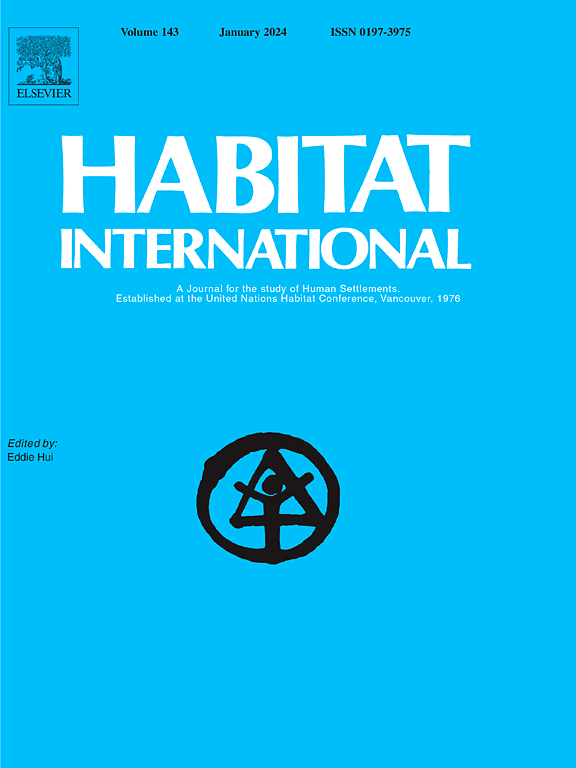Greenspace equity across variation in residential densities: Insights for urban sustainability
IF 6.5
1区 经济学
Q1 DEVELOPMENT STUDIES
引用次数: 0
Abstract
The enhancement of eco-social services provided by greenspace enhances human well-being and supports sustainable urban development. The United Nations has explicitly emphasized the need to "ensure the availability of greenspaces for urban residents" in SDG11. Nonetheless, with the current trends of urban sprawl and residential densification, greenspace shrinkage and degradation are accelerating, thereby diminishing its multifaceted benefits. These trends have also exacerbated inequalities and environmental justice issues. The disparity in greenspace exposure and its inequality across residential areas with varying densities has also been further exacerbated during this process. However, the specific magnitude and trend of change in this disparity were still poorly understood. To address this gap, we incorporated a random forest algorithm-based 30-m time-series greenspace mapping and an RSEI-based population-weighted exposure framework to quantify spatiotemporal variations in human exposure to greenspace across residential areas of varying densities in 154 cities at the patch scale. Finally, the Gini coefficient and MGWR were combined to assess the spatiotemporal heterogeneity of inequality in greenspace exposure and its influencing factors. Results indicated that greenspace exposure was greater in low-density residential areas than in high-density areas (0.72 vs 0.16), while equality was weaker (Gini coefficient:0.83 vs 0.61), both gaps have shown a tendency to narrow over time. Greenspace exposure equality was primarily driven by greenspace quality rather than its coverage ratio (Beta: −0.434 vs 0.40, P < 0.05). These findings contribute to our understanding of greenspace inequality in residential areas of different densities, suggesting directions for optimizing greenspace layout and offering new insights for sustainable urban development.
住宅密度变化中的绿色空间公平:对城市可持续性的见解
绿地提供的生态社会服务增强了人类福祉,支持了城市的可持续发展。联合国在可持续发展目标11中明确强调了“确保城市居民获得绿色空间”的必要性。然而,随着当前城市扩张和住宅密度化的趋势,绿地的萎缩和退化正在加速,从而减少了其多方面的好处。这些趋势也加剧了不平等和环境正义问题。在这一过程中,不同密度的居住区绿地暴露的差异和不平等也进一步加剧。但是,人们对这种差距的具体幅度和变化趋势仍然知之甚少。为了解决这一差距,我们结合了基于随机森林算法的30米时间序列绿地映射和基于rsei的人口加权暴露框架,在斑块尺度上量化了154个城市不同密度居民区人类对绿地暴露的时空变化。最后,结合基尼系数和MGWR评价了绿地暴露不平等的时空异质性及其影响因素。结果表明,低密度居住区的绿地暴露程度高于高密度居住区(0.72 vs 0.16),而平等程度较弱(基尼系数:0.83 vs 0.61),两者的差距随着时间的推移呈缩小趋势。绿地曝光平等性主要由绿地质量而非覆盖率驱动(Beta值:- 0.434 vs 0.40, P <;0.05)。这些发现有助于我们理解不同密度居住区绿地不平等,为优化绿地布局提供方向,为城市可持续发展提供新的见解。
本文章由计算机程序翻译,如有差异,请以英文原文为准。
求助全文
约1分钟内获得全文
求助全文
来源期刊

Habitat International
Multiple-
CiteScore
10.50
自引率
10.30%
发文量
151
审稿时长
38 days
期刊介绍:
Habitat International is dedicated to the study of urban and rural human settlements: their planning, design, production and management. Its main focus is on urbanisation in its broadest sense in the developing world. However, increasingly the interrelationships and linkages between cities and towns in the developing and developed worlds are becoming apparent and solutions to the problems that result are urgently required. The economic, social, technological and political systems of the world are intertwined and changes in one region almost always affect other regions.
 求助内容:
求助内容: 应助结果提醒方式:
应助结果提醒方式:


